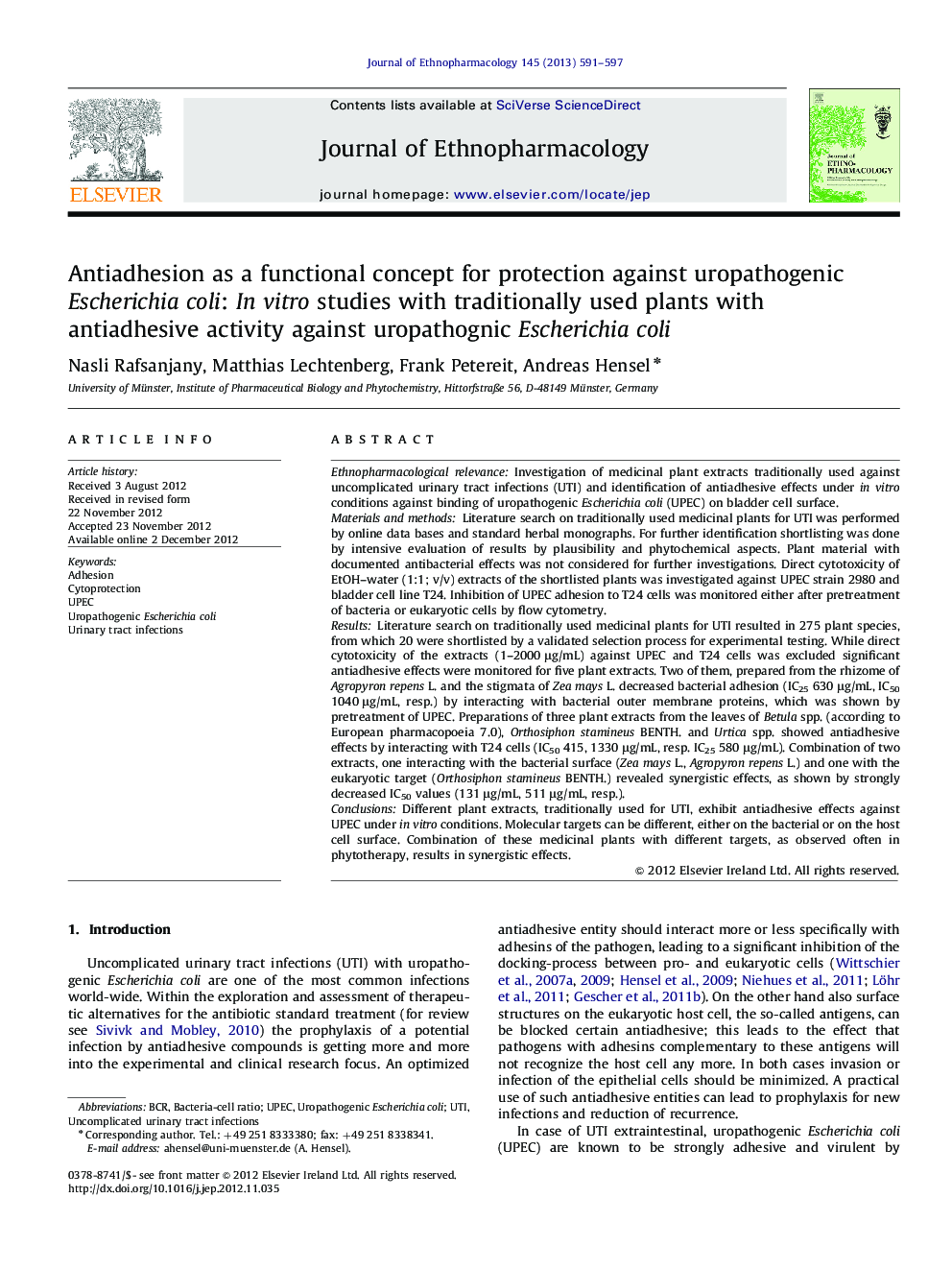| Article ID | Journal | Published Year | Pages | File Type |
|---|---|---|---|---|
| 5837682 | Journal of Ethnopharmacology | 2013 | 7 Pages |
Ethnopharmacological relevanceInvestigation of medicinal plant extracts traditionally used against uncomplicated urinary tract infections (UTI) and identification of antiadhesive effects under in vitro conditions against binding of uropathogenic Escherichia coli (UPEC) on bladder cell surface.Materials and methodsLiterature search on traditionally used medicinal plants for UTI was performed by online data bases and standard herbal monographs. For further identification shortlisting was done by intensive evaluation of results by plausibility and phytochemical aspects. Plant material with documented antibacterial effects was not considered for further investigations. Direct cytotoxicity of EtOH-water (1:1; v/v) extracts of the shortlisted plants was investigated against UPEC strain 2980 and bladder cell line T24. Inhibition of UPEC adhesion to T24 cells was monitored either after pretreatment of bacteria or eukaryotic cells by flow cytometry.ResultsLiterature search on traditionally used medicinal plants for UTI resulted in 275 plant species, from which 20 were shortlisted by a validated selection process for experimental testing. While direct cytotoxicity of the extracts (1-2000 μg/mL) against UPEC and T24 cells was excluded significant antiadhesive effects were monitored for five plant extracts. Two of them, prepared from the rhizome of Agropyron repens L. and the stigmata of Zea mays L. decreased bacterial adhesion (IC25 630 μg/mL, IC50 1040 μg/mL, resp.) by interacting with bacterial outer membrane proteins, which was shown by pretreatment of UPEC. Preparations of three plant extracts from the leaves of Betula spp. (according to European pharmacopoeia 7.0), Orthosiphon stamineus BENTH. and Urtica spp. showed antiadhesive effects by interacting with T24 cells (IC50 415, 1330 μg/mL, resp. IC25 580 μg/mL). Combination of two extracts, one interacting with the bacterial surface (Zea mays L., Agropyron repens L.) and one with the eukaryotic target (Orthosiphon stamineus BENTH.) revealed synergistic effects, as shown by strongly decreased IC50 values (131 μg/mL, 511 μg/mL, resp.).ConclusionsDifferent plant extracts, traditionally used for UTI, exhibit antiadhesive effects against UPEC under in vitro conditions. Molecular targets can be different, either on the bacterial or on the host cell surface. Combination of these medicinal plants with different targets, as observed often in phytotherapy, results in synergistic effects.
Graphical abstractDownload high-res image (112KB)Download full-size image
